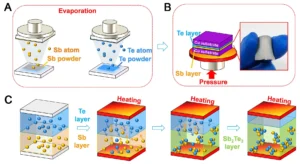The term LASER stands for “Light Amplification by Stimulated Emission of Radiation.” It is a device that generates a beam of coherent, monochromatic light through the process of optical amplification based on the stimulated emission of electromagnetic radiation. LASER technology is integral to numerous applications in science, medicine, industry, and everyday life, making it a cornerstone of modern technology.
Definition of LASER
Light Amplification by Stimulated Emission of Radiation
A LASER is a device that emits light through a process called stimulated emission. Here’s a breakdown of the components:
- Light: Refers to electromagnetic radiation that is visible to the human eye, as well as other forms of electromagnetic radiation that are not visible.
- Amplification: The process of increasing the intensity of light.
- Stimulated Emission: The process by which an incoming photon induces the emission of another photon from an excited atom or molecule, with the same phase, frequency, polarisation, and direction.
Characteristics of LASER Light
1. Coherence:
- Spatial Coherence: LASER light has waves that are in phase in space, leading to a narrow beam that can be focused to a small point over long distances.
- Temporal Coherence: LASER light waves have a consistent phase relationship over time, which results in a monochromatic light with a single wavelength.
2. Monochromaticity:
- LASER light consists of one specific wavelength (color), in contrast to ordinary light which contains multiple wavelengths.
3. Directionality:
- LASERs emit light in a highly collimated beam that travels in a specific, narrow direction. Ordinary light spreads out as it travels away from the source.
4. High Intensity:
- LASERs can produce very high light intensities due to the coherent nature and focusability of the beam.
Ordinary Light vs. LASER Light
1. Light Source:
- Ordinary Light: Typically produced by sources such as incandescent bulbs, LEDs, and the sun, emitting a broad spectrum of light.
- LASER Light: Produced by a LASER device that amplifies light through stimulated emission, emitting a specific wavelength.
2. Coherence:
- Ordinary Light: Incoherent, with light waves that have random phases.
- LASER Light: Coherent, with light waves that are in phase in both space and time.
3. Monochromaticity:
- Ordinary Light: Composed of multiple wavelengths.
- LASER Light: Typically a single wavelength, hence monochromatic.
4. Directionality:
- Ordinary Light: Emits in all directions, spreading out from the source.
- LASER Light: Highly directional, forming a narrow, focused beam.
5. Intensity:
- Ordinary Light: Lower intensity due to the spread of energy over many wavelengths and directions.
- LASER Light: High intensity because the energy is concentrated in a specific direction and wavelength.
Applications of LASER Technology
1. Medical Field:
- LASERs are used in various surgical procedures, including eye surgery (LASIK), tumor removal, and cosmetic surgeries.
2. Communication:
- Fiber optic communication relies on LASERs to transmit data over long distances with minimal loss.
3. Industrial Applications:
- LASERs are employed in cutting, welding, engraving, and 3D printing due to their precision and high energy.
4. Scientific Research:
- LASERs are essential in spectroscopy, holography, and various forms of microscopy.
5. Military:
- LASER technology is used in rangefinders, target designation, and directed-energy weapons.
Conclusion
LASER technology represents a significant advancement over ordinary light sources due to its unique characteristics of coherence, monochromaticity, directionality, and high intensity. These properties enable its diverse applications across various fields, from medicine to communication and beyond. Understanding the fundamental differences between ordinary light and LASER light helps appreciate the versatility and efficiency of LASERs in modern technology.




